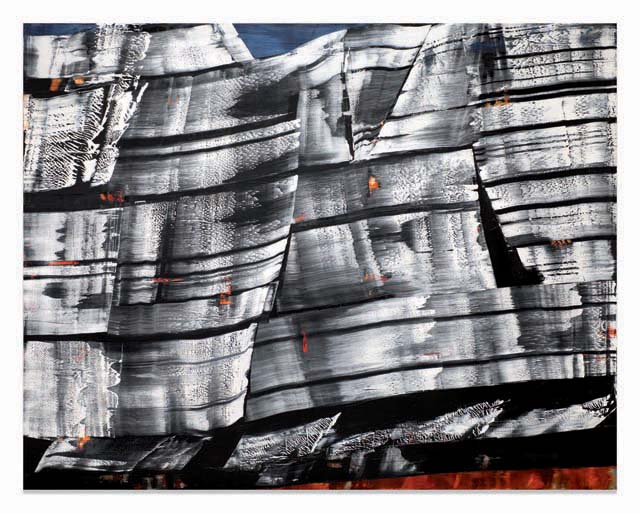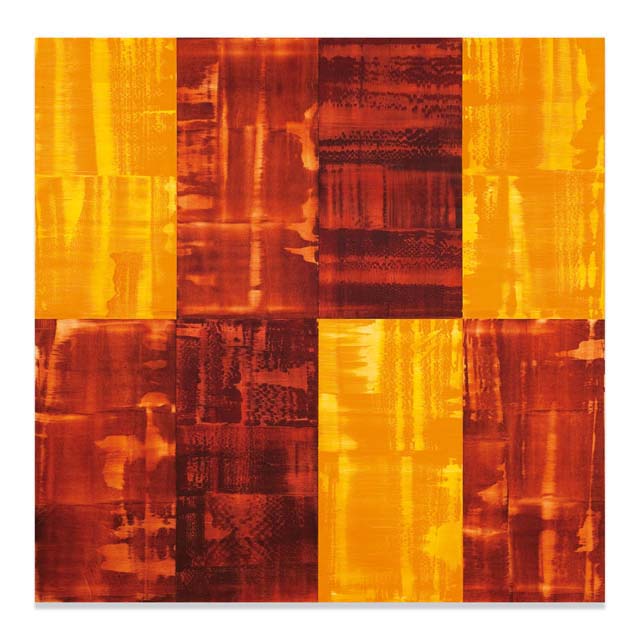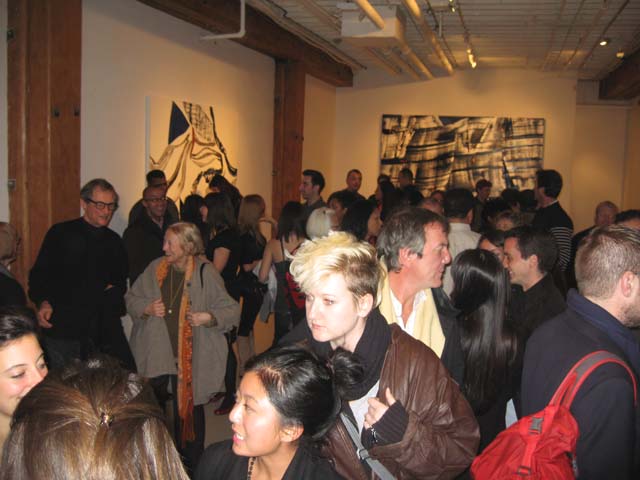
Ricardo Mazal, life & death on Mount Kailash
Mount Kailash, Tibet’s holiest summit, gives lessons in life – and death. It can even inspire people who have never seen it. Mexican contemporary artist Ricardo Mazal was mesmerized by the images and took a trip, one of the most difficult he’s ever attempted, to do the ‘Kora’ or pilgrimage which is a 33 mile trek around the peak, and is undertaken by Buddhists, Hindus, Jains and Bonpos alike.
It is believed that 108 rounds of Mount Kailash can lead to nirvana. The Kora became a pilgrimage for Ricardo Mazal to unearth larger truths about life and death. A noted Latin American artist, he has had ten individual museum exhibitions in Mexico and the US, including a recent retrospective in the Museo de Arte Moderno in Mexico City.
The result of his visit to Mount Kailash is ‘Kora’, a stunning exhibition at the Sundaram Tagore Gallery, recreating a landscape of mountain peaks, prayer flags and silence. It is the last in his trilogy of the sacred burial rituals of three cultures, the others being inspired by the Mayan tomb of The Red Queen in Palenque, Chiapas Mexico, and the Peace Forest cemetery in Odenwald, Germany. His work embraces multicultures, and has a global touch to it.
Mazal, a self-taught artist who did not begin painting till he was in his 30’s, has been working on the Burial Trilogy for over six years and ‘Kora’ is the culmination of the trilogy which received a grant from the Mexican government. All of his work starts out with digital photographs, rooted in his personal experiences and then becomes progressively abstract
“It’s probably one of the most difficult trips I’ve ever done,” he says. “It’s a very remote, very difficult area and high altitude. We flew to Nepal, drove through Tibet and spent four days on Mount Kailash. The Kora is a pilgrimage around the mountain. We were warned when we arrived at the site that 16 people had already died that summer from different problems.”
Does one have to be a Hindu or a Buddhist to do the Kora?
“No. You can also be a crazy artist to do it too!” he says with a smile.
Although Mazal jokes about it, undertaking the pilgrimage was a big commitment and a lot of hardship. “The correct form of pilgrimage here is not a climb, a conquering of the summit but a kora – a circumambulation of the mountain,” explains poet and novelist Henry Shukman in ‘Kora- the Cycle of Birth and Death’ in the catalog accompanying the exhibition ‘Kora’. “At an average walking pace, the journey takes three days, and is arduous in itself, involving steep, long ascents, as well as the endurance required by any walk at heights above 18,000 feet.”
“For most devotees, clockwise is the preferred direction; but Bon adherents are required to go counter-clockwise. Some employ special breathing techniques that propel them around the mountain in a single day and night. Others undertake to make a complete prostration with every single step, or even several prostrations, which can result in a single circuit of the mountain taking years to complete.”

Mount Kailash is the holiest place in the Tibetan Buddhism but is also venerated in Hindu and Jain tradition. In the Tibetan sky burials, the tradition is for bodies to be left segmented for the animals, the vultures and nature to recycle. The sky burials are about letting nothing go waste and giving yourself back to the elements. Mazal says, “It’s a way of regeneration through nature.”
How has his work on the Burial Trilogy changed his outlook?
“It’s about life and death and about examining different cultures on how they approach death,” he says. “But it’s really more about life because it’s how we humans create that end of our lives. When I was in Germany in the forest and I saw the cemetery of trees, I saw children playing hide and seek amidst the trees – I realized that my project was dealing more with life – challenging death and celebrating life. I feel I’m still not finished. Right now I call it a trilogy but I don’t know where it will go, and I want to take the painting to different levels through exploration.”
Henry Shukman on Ricardo Mazal’s ‘Kora’
“All of this mystery, this beautiful paradox, can be found in Mazal’s work. First, the cyclical way he comes to the final canvases, reworking the images digitally, letting canvas and computer speak to each other over and over; the image leapfrogging over itself from medium to medium, until a final result is settled; and the way there is so much movement from the gorgeous generosity of the flying prayer flags, to the radial circularity of the blocks of color inspired originally by the pigment boxes – and yet underlying it all, that wonderful quality of stillness. Motion and immobility; life and death; suffering and liberation: Mazal’s Kora speaks to us from the center of all of them.”

Ricardo Mazal – Mount Kailash, Fluttering Prayer Flags
For years Mazal has explored the cycle of life, death and regeneration. In each of his investigations, photographs have been the impetus. For Mazal, photography is a bridge that links reality to abstraction. His process begins by manipulating his photographs on the computer to compose a digital sketch. He then moves onto the canvas, delicately layering oil paint using foam-rubber blades. To reveal luminous passages of color, Mazal sweeps a dry blade with varying degrees of pressure across the canvas. The vestiges of paint are almost embryonic in structure with faint texture and hue.
At regular intervals, Mazal photographs his painting in progress. Returning to his computer, he creates hybrid sketches that fuse the photographs of the painting with the virtual drawing allowing him to revisit his composition. Often, Mazal’s influences will also spring from images of previous paintings, which he incorporates into new digital sketches. It is a regenerative and cyclical process closely paralleling the themes he explores.
During his 21-day journey, Mazal documented the striated façade of Mount Kailash, the wood-frame boxes of pigments in the frontier town Darchen, and the streams of prayer flags quivering in the wind. What emerged from these studies were three distinct bodies of work. In paintings such as Kora MK8, blurred areas of black and white paint sweep across the surface of the canvas in a flickering motion.
The repetition of horizontal streaks recalls the snow-streaked surface of the black mountain. The imbricated lines are also suggestive of a geological diagram indicating the passing of time. Meanwhile, in works such as Kora PF5, Mazal’s forms become looser echoing the freedom and fluidity of the vibrant prayer flags positioned across the mountain.
According to Tibetan belief, the fierce winds deliver the blessings inscribed on the flags to the world. Finally, in the Cajas paintings, Mazal draws on the form of compartmentalized boxes of pigments. In Cajas Amarillo/Ocre/Rojo, for instance, he creates a geometric grid-like composition housing intense saffron, red and orange hues characteristic of Tibet. Each of Mazal’s works is charged with exuberance and movement. Thus while his paintings may emerge from sites relating to death, they are in fact a deeply spiritual celebration of life.
(Source: Sundaram Tagore Gallery)

2 Comments
Hi Kriti, it’s an intriguing subject and beautiful art. I was lucky enough to meet the artist and chat with him.
Life and Death is always such an intriguing subject…